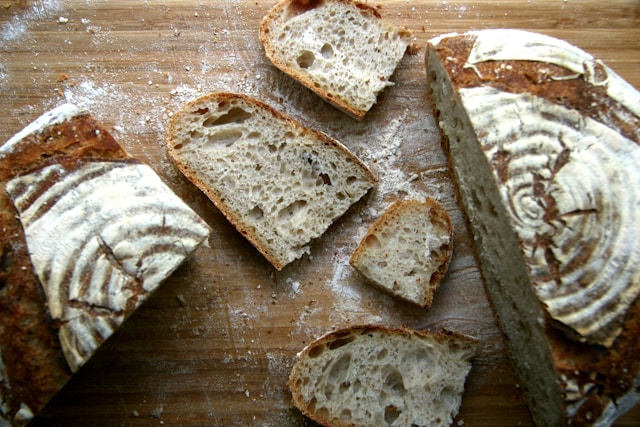Sourdough, the oldest form of leavened bread, has been consumed for millennia. Its starter consists of just flour and water, forming a live culture where yeast and bacteria ferment sugars in flour, resulting in its distinctive flavor, aroma, and rise without additional leavening agents. Recently The Ohio State University researchers explored the microbial community of sourdough using scanning electron microscopes (SEM).
SEM USED instead of light based microscopy to examine sourdough
Scanning Electron Microscopy (SEM) is a powerful imaging tool that can visualize samples at the nanometer scale, much smaller than the width of a human hair. Unlike traditional light-based microscopy, SEM uses electrons, enabling observation of structures 10,000 times smaller.
However, SEM has limitations as samples must be electrically conductive and tolerate vacuum conditions. To prepare samples, researchers employ critical point drying to minimize artifacts and preserve details, followed by coating with a thin layer of iridium metal to enhance conductivity.
Sourdough starters, created from wild yeast and bacteria in flour, foster a diverse microbial environment, with over 20 yeast and 50 bacteria species. Dominant species emerge from this complexity. The starter’s microbial composition, seen visually, displays varying components such as yeast and bacteria, with starch grains from flour being the primary texture contributor. Full diversity understanding necessitates gene sequencing.
Red coloured starter yeast initiates dough fermentation process
The yeast, depicted in red, initiates the fermentation process in dough, causing it to rise by fermenting sugars from starch grains and emitting carbon dioxide and alcohol. Yeast varies in size, typically between 2 to 10 micrometers, and can be round or elongated. Two yeast types are evident in the image: one nearly round and the other elongated. Meanwhile, bacteria, shown in blue, metabolize sugars to produce lactic acid and acetic acid, serving as preservatives and imparting a sour aroma and taste to the starter. The bacteria appear as pill-shaped structures around 2 micrometers in size.
Next time you indulge in sourdough bread or sourdough waffles (highly recommended for their delightful taste!), take a moment to imagine the diverse community of microorganisms that contribute to the unique flavor of each bite.


